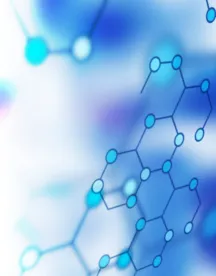Amgen has filed a complaint under the Biologics Price Competition and Innovation Act (BPCIA), asserting that a biosimilar application filed by Apotex, Inc. infringes two of its patents. Although several complaints have invoked the BPCIA, this may be the first one in which the patent dance provisions have been followed.
The Biosimilar Patent Dance
According to Amgen’s complaint filed in the U.S. District Court for the Southern District of Florida, Apotex filed a Biologic License Application (BLA) seeking FDA approval to market a biosimilar version of Amgen’s Neulasta® (pegfilgrastim) product. Amgen describes pegfilgrastim as “a recombinantly expressed, 175-amino acid form of … human granulocyte-colony stimulating factor (‘G-CSF’) conjugated to a 20 kD monomethoxypolyethylene glycol (m-PEG) at the N-terminus.”
Also according to the complaint:
Beginning in December 2014, the parties engaged in the exchange of information and statements as required by the BPCIA. As a result of these exchanges, the parties have agreed to the inclusion of two U.S. patents in this action: the ’138 Patent [U.S. 8,952,138] and the ’784 Patent [U.S. 5,824,784] (“Patents in Suit”)
Independent claim 1 of the ‘138 patent recites:
1. A method of refolding a protein expressed in a non-mammalian expression system and present in a volume at a concentration of 2.0 g/L or greater comprising: (a) contacting the protein with a refold buffer comprising a redox component comprising a final thiol-pair ratio having a range of 0.001 to 100 and a redox buffer strength of 2 mM or greater and one or more of: (i) a denaturant; (ii) an aggregation suppressor; and (iii) a protein stabilizer; to form a refold mixture; (b) incubating the refold mixture; and (c) isolating the protein from the refold mixture.
(As a method of manufacture claim, this type of claim could not be listed in the Orange Book.)
Independent claim 1 of the ‘784 patent recites:
1. A substantially homogenous preparation of N-terminally PEGylated G-CSF or analog thereof, optionally in a pharmaceutically acceptable diluent, carrier or adjuvant, said preparation being essentially free of G-CSF or analog thereof PEGylated at sites other than the N-terminus.
The Notice of Commercial Marketing Standoff
Although Amgen and Apotex cooperated in the biosimilar patent dance, it appears that they disagree on the notice requirements of 42 U.S.C. § 262(l)(8)(A). According to Amgen, Apotex “purport[ed]” to give notice on April 17, 2015, even though its product had (and has) not yet been approved. As Amgen notes in its complaint, the Federal Circuit held in Amgen v. Sandoz that notice cannot be given before the biosimilar is approved. But, Sandoz has requested rehearing en banc of that finding, so the issue may not yet be finally resolved.
Patent Litigation Under The BPCIA
Although the BPCIA defines new acts of patent infringement and lays out rules for selecting the patents to be asserted, it does not address how patent litigation under the BPCIA should be conducted. Likely, it will proceed much like other patent litigation, but protective orders may prevent us from following along every step of the way.




 />i
/>i


